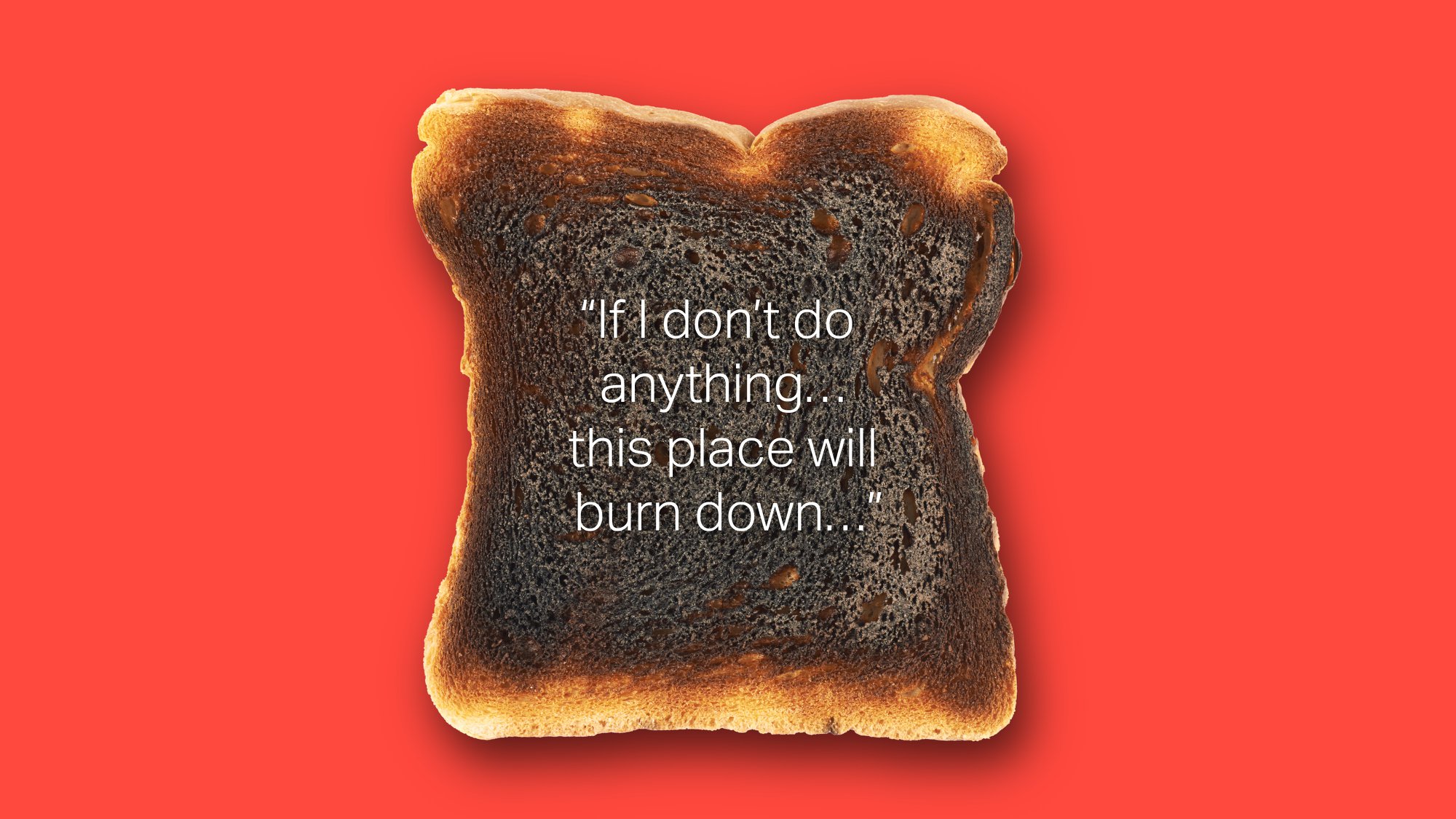How values, behaviours and employer brand work together

How does employer brand intersect with your values and behaviours?
It’s a question we’re often asked to address by clients across the HR and Marketing spectrums.
Values and behaviours are what your employees see and hear; they guide behaviour.
The employer brand attracts the top talent that a business needs; then it retains it and fuels it.
It’s the oxygen of a business.
Why invisible?
A brand, to paraphrase Michael Eisner, is the product of a thousand small gestures built up over time.
To quote my first boss …
…the brand becomes the space you get to rent in a customer’s mind and memory.Anita Roddick, Founder of The Body Shop
It’s why organisations spend a lot of time, money and thinking codifying the brand and using that output to guide every action.
You’ll not find it printed on the back of packaging or in the last frame of the TV advert, but it is present.
It’s there guiding everything the brand does: the sponsorship deals it agrees, the products it designs, the price points it sets, the distribution models it chooses, the straplines it decides to use – it’s omnipotent.
The employer brand should be no different.
And yet too many HR departments the world over are determined to launch their employer brand frameworks to unsuspecting employees.
They create a brand framework and then seem hellbent on putting it on a poster and telling every candidate and employee about it.
You would never catch the marketing department doing this with customers, so why should employees be any different?
Put it away!
The role of values and behaviours
So, what should employees see?
For the past few years, I’ve often felt that values and behaviours have had a ‘bum rap’, as the rise of brand and company purpose has taken hold.
Organisations, led by the likes of Unilever, have shown why having an organising purpose can galvanise employees and customers alike.
I’m in full agreement, but a question remains: if purpose gets you out of bed in the morning, what guides your actions and what makes that action consistent?
This is where values and behaviours comes to the fore.
Your values lay out the shared principles and unshakeable beliefs behind which an organisation and its employees line up.
They don’t have to be the personal values of every employee (and it’s almost impossible that they ever will be), but they do have to be values for which employees are prepared to work.
The behaviours articulate what this looks like in practice and become the detailed statements and descriptions against which the organisation and the individual is held to account.
Put simply, a value might be ‘Honesty’ and a behaviour attached to it might be ‘I will always tell the truth.
Together, values and behaviours guide the actions of the company and the individual when they’re working on behalf of the customer, and they guide the actions of one employee towards another.
The values and behaviours are what the employee must see and hear every day.
They must see it in role models and leaders, hear it from the lips of line managers and colleagues, and have it reinforced in the communications they receive. Failure to do this is risky.
On April 20, 2010 an example of values failure was brought tragically to life.
The world watched in horror as the oil drilling rig, Deepwater Horizon, which was situated in the Gulf of Mexico and operated by BP and contractors Halliburton, exploded.
The failure of a valve on the ocean bed caused an explosion which killed 11 people.
So, where were values on that day?
At the time, BP had 4 values: performance-driven, innovative, progressive and green.
Just 12-months before the dreadful incident in the Gulf, the value ‘green’ had been rewritten as ‘responsible’.
This may seem to be a change disconnected with the explosion, but it was indicative of a strategy focused far more on pursuing the extraction of valuable fossil fuels, often in hard-to-reach environments.
At the time, the extraction of oil and gas was far more attractive to shareholders than expensive investments in ‘alternative energy’, which were still far from paying dividends.
As a trade-off to ‘green’ biting the dust, the then CEO, Tony Haywood, would go on record to say that safety was the number one priority for the business.
But it was never formally stated as a value.
The goals were clear – pursue the prizes.
In early April 2020, Tony Haywood was close to being able to announce BP as the biggest oil company in the world.
His predecessor, Sir John Browne, had attempted to position the business as an energy company, something that 10-years later would seem to be the norm.
Instead, BP’s 2010 focus had skewed towards scale, success and ultimately, just one of those original company values – performance-driven.
During the post-Deepwater Horizon employee research that The Team conducted with BP, it became apparent that the organisation had taken its eyes off the values in their entirety.
The values of progressive, innovative and green had been relegated.
While BP people were undoubtedly safety-minded, the organisation over-stretched itself in the pursuit of performance until the elastic snapped.
Values and behaviours are the guidebook for the mindset of the business – they set the drumbeat for consistent organisational behaviour.
Values and behaviours give us balance, each value must be given equal standing.
It’s why I am never a fan of mnemonics as they tend to give employees one word to remember at the expense of taking time to remember each of the values in turn.
Since that time, BP has introduced new values and behaviours, with Safety clearly called out.
Alongside Safety sits Respect, Excellence, Courage and One Team.
And, the energy company has improved, with injuries falling from 1.6 per million hours worked to 0.83, and oil spilled by 49.2%.
Clearly stated and lived values and behaviours do shape action.
How many values should you have?
What should they be?
Well, I am a fan of the Power of 3, but whatever number you choose, make it memorable and keep up the ante in communications.
Of course, if you want to select the top values chosen by most success start-ups, then look here.
What does this mean for Employer Brand and EVP?
Nothing happens in a vacuum.
An employer brand creates the conditions for employees to want to go the extra mile. It allows the right culture to emerge.
In his recent book Noise, psychologist Daniel Kahneman points to conditions that influence judgement. He examines how factors like mood, heating, environment – even the weather – can influence the judgements people make.
While employers cannot play God with the sun and the rain, they can eliminate some noise and create conditions that are right for the talent they wish to attract.
The Employer Brand is the framework which anyone designing any part of the employee experience should use as their guide.
Yes, this includes HR professionals.
Many will be responsible for recruitment, onboarding, learning & development, reward and recognition and so forth, but it includes others too.
The I.T. function will have one of the biggest impacts on employees.
Access to technology and maintenance is a key touchpoint, as is access to hardware like desks or space like meeting rooms.
Processes like applying for expenses, increasing payments to a pension, securing a parking space or applying for a security pass are all employee touchpoints.
Many of the owners are not in HR, and going back to Michael Eisner’s point, a brand is the product of a thousand experiences – both large and small.
What should be in your Employer Brand?
Put simply, it should have 3 components:
-
- Employer brand promise: This is a simple strapline that summarises why people should join and stay with you. It’s your ‘Why’, and it has to link to both your company purpose and/or ambition, and your Employee Value Proposition. It brings that give and get together in one line.Unilever’s promise as stated on its website is a prime example: ‘A Better Business, A Better World, A Better You.’This promise wraps up the purpose-led beliefs of the business (A Better World) with a commitment to the individual (A Better You).
- The Employee Value Proposition: This is the give and the get, it is the offers upon which your EVP is built. There may be 3, 4 or 5 pillars here. These pillars, outline your true core strengths.They make clear what employees can expect from working inside your business and what is expected from them in return.The pillars influence the design of policies, processes, benefits and all the employee experience strategies throughout the employee lifecycle.Naturally, there can be different value propositions for different talent targets, but ultimately everything needs to ladder up to one framework. The EVP is about being clear about what you offer people and what they will get in return. It is the ‘what’.
- Employer Brand Design Principles: The design principles inform what the employee experience feels like. They are your style and tone guide and influence everything from visual identity to the way you write, talk and design experiences. Where the pillars influence what you do, the design principles inform how you do it.
How do you get started?
When developing or stress testing your EVP, we recommend following the Four Cs:
- Customers: Understand what they are expecting from a good employee. You need to be able to articulate these core behaviours as they are what you are expecting you’re your talent. Subsets of ‘Customer’ include understanding what partners, suppliers, vendors, volunteers and shareholders expect.Ultimately, it’s this group of people who will decide whether your business is a success so being able to articulate what they feel a good employee looks like will help you to understand persona you want to attract and retain.
- Candidates: Understand what people who are looking for a move to (or across) your sector want from a prospective employer. You will want/need to understand what partners like recruitment consultancies are observing.Candidates will be able to express clearly what they are not getting from existing employers that they would expect from their new employer.But, be clear in pre-selecting the types of employee you want to hear across both early years and experienced hires. There is a difference between hearing from an employee that wants a thriving and pacey environment and one who is looking for a more methodical and thoughtful culture.
- Competitors: Undertake an appraisal of your competition – both those in your sector, and competitors who may be attracting the talent you need in other sectors. For example, everyone is seeking to hire tech talent, so where are those people naturally heading and why. What is it that tech companies are saying that might be attractive?
- Colleagues: Understand why high performing colleagues stay with your business. You must understand the strengths of the EVP as seen through the eyes of employees, and you must also understand the weaknesses that need to be addressed.Identify what is driving flight risks so that these can be addressed longer term. Do this by tapping into existing engagement surveys before embarking upon fresh rounds of focus groups and online surveys.
All this will enable you to gain a rounded picture of how your Employer Brand and EVP needs to behave in order to attract and retain talent.
Everything you do must start with rich data points. No data, no direction.
With these data points on board, you’ll be able to create the personas you need in order to articulate an EVP that will work to service your business strategy.
The personas must be able to describe your target talent – including who they are, where they work, what they are seeking to earn, what their careers aspirations are, and the media they consume.
Then you can then craft your ‘give and get’ and design principles accurately.
We can help your business thrive





